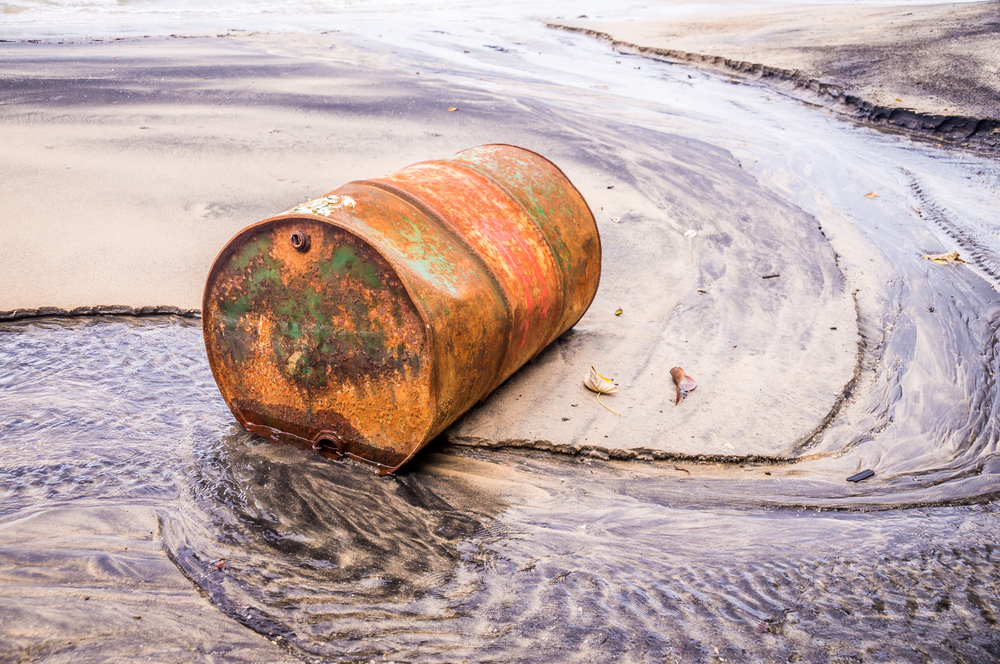
Image Credit: Julian Peters Photography/Shutterstock.com
There are many ways oil or petroleum hydrocarbons end up in the waterways, such as offshore rig accidents and pipeline ruptures. With water traffic increasing, oil spills from the overturned ships and vessels have significantly contributed to the ocean's overall oil spillage. As hydrocarbon pollutants cause immense damage to the marine ecosystem and our environment, it is essential to remove these contaminants from the sea. Scientists believe that bioremediation using microbes is one of the most efficient, clean, and carbon-neutral solutions to extract oil from the ocean.
Crude Oils and Refined Fuels
Both crude oils and refined fuels are described as complex mixtures of thousands of molecular species. With the help of modern technologies such as gas chromatography and high-resolution mass spectrometry, scientists have grouped them into the following categories:
- Saturated hydrocarbons
- Aromatic hydrocarbons
- Resins
- Asphaltenes
Crude oils are commercially classified in accordance with their density in units of API (American Petroleum Institute) gravity. Denser fluids have lower API gravities. Almost all oils used in trades float on seawater. However, in rare cases, some bunker fuels and heavy bitumen may “float” beneath the surface of freshwater. An example of such a spillage was the Presidente Rivera spillage in the Delaware River in 1989.
Microbial Bioremediation of Oil Spills
Researchers have explained that microbes are not the sole factor involved in cleaning up an oil spill. Various physical and chemical processes, such as evaporation, dissolution, dispersion, and photooxidation, are extensively involved in the cleaning up process. However, microbes have proved extremely useful in the bioremediation of crude oil and refined oil spills in land and water.
The fate of the oil spilled depends on its composition. For example, diesel fuel, gasoline, and kerosene are easily cleaned up from the marine environment as they are highly volatile and biodegradable. However, it takes a longer time if they are present in groundwater or marshes, buried in the sediment and soil, or conditions where oxygen concentration is very low.
Microbes can biodegrade 90% of light crude oil. Several environmental factors determine how fast biodegradation will occur. Some of these are - a) nature of the oil spilled, b) location of the oil spill, c) duration and volume of the oil spilled.
Bacteria can degrade oil to water and carbon dioxide. As stated above, crude oil or refined fuels consist of thousands of different types of molecules. A single microbe can efficiently degrade several hydrocarbon types, and thereby, a group of microorganisms or bacterial consortium can biodegrade all kinds of hydrocarbons present in the oil spill.
In response to the marine ecosystem's oil spill, the local microbial community comprising different microbes starts reacting to the condition. The microbes that prefer oil hydrocarbons as an energy source, rapidly increase their growth rate over other microbes. Therefore, the microbial population of the oil-eating microbes increases.
In the presence of petroleum hydrocarbons, microbes turn on their metabolic machinery that aids their oil degradation capabilities. Researchers have also stated that microbes initiate horizontal gene transfer (HGT). HGT is a mechanism where one microbe transfers its genes to another microbe (even microbes of different species). This gene consists of the instructions for microbes to produce oil-degrading enzymes. This enables microbes to create enzymes that degrade oil. Therefore, the capacity of local microbial communities to bioremediate oil spills increases.
Oil Degrading Microorganisms
Several microbes have the potential to degrade oil. Researchers have identified around 0.002% of the total bacterial population as oil-degrading bacteria. Some of the common oil-degrading microbes are:
Bacteria
Cycloclasticus, Alcanivorax, Gammaproteobacteria, Colwellia sp, Desulfococcus oleovorans, etc.
Fungus
Aspergillus, Cyanobacteria, Mucor, Penicillium, Fusarium, Rhodotorula, Sporobolomyces, Candida, etc.
Read More: Directa Plus: Innovative Graphene-Based Oil Spill Recovery Systems
Companies involved in the clean-up of marine oil spills using the process of bioremediation are as follows:
Oil Spill Eater International, Corporation
This company is based in Dallas, US. It is involved in a cost-effective and safe approach to mitigate hazardous spills both on land and the marine environment. They follow the method of bioremediation for the cleaning up of the contaminants. The organization removes any size of contaminants at difficult locations.
Microsorb
Microsorb also uses bioremediation techniques to clean up oil spills. It claims that its SC-W product can clean up surface oil spills on water surfaces. It can easily be applied from air or a boat. The company claims that it leaves water clean and provides nutrients useful for the growth of marine creatures.
Sarva Bio Remed
Sarva Bio Remed uses environmental biotechnology and has developed products for bioremediation. These products are highly efficient in cleaning up oil spills on both land and water in a very short period.
References and Further Readings
Prince, C.R. and Atlas, R.M. (2018). Bioremediation of Marine Oil Spills. Springer International Publishing. 1-25. https://doi.org/10.1007/978-3-319-44535-9_13-1
Microbes and Oil Spills. American Academy of Microbiology. (2011) https://earthsciences.typepad.com/files/microbes_and_oil_spills.pdf
OSEI Corp [Online] Available at: http://www.osei.us/
Microsorb [Online] Available at: https://www.microsorb.com/solutions/spills
Sarva Bio Remed [Online] Available at: https://sarvabioremed.com/products/spillremed-marine/
Disclaimer: The views expressed here are those of the author expressed in their private capacity and do not necessarily represent the views of AZoM.com Limited T/A AZoNetwork the owner and operator of this website. This disclaimer forms part of the Terms and conditions of use of this website.